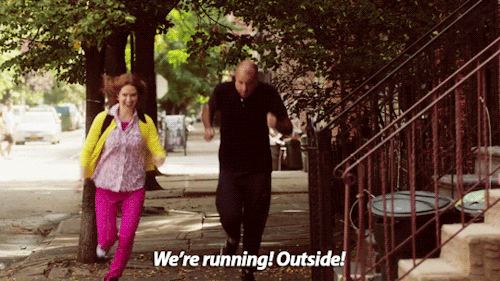Written by Ch’nell Amos
So, you want to write a blog, or you’ve been assigned one, but don’t know where to start or why a blog even matters. Well, if you think blogging is dead in 2020, then you’d be wrong. Blogging came into existence in 1994, by a student named Justin Hall, who just wanted a place to display his writing, but blogging has evolved over the years into microblogs (ex. Twitter and Instagram), tumblogs (ex. Tumblr), vlogs (ex. YouTube), and podcasts (ex. Spotify). Blogging is not just the place to find a great sweet potato pie recipe, but also a way to engage with like-minded readers, market a business, and practice writing skills. Blogging is an important resource and professors and universities often have their own blogging platforms that act as an “invisible college’…broadening education as whole, [and] taking it beyond…departments and universities.” There are a vast number of tutorials online about how to create a blog site and how to write a blog, but let’s focus on the main things every blogger should know when writing a blog.
Know Your Audience
A great blog is both educational and interesting, so when considering your audience, think “Who might need this information?” and “Who might find it interesting?” Typically, the audience is one in the same. Knowing your audience is marketing 101 and blogging is a business. Yes, of course, there are some that still use blogging as a diary, but blogging is also about branding, selling, and educating. Put yourself in the reader’s shoes and consider what information would keep them on your page. Knowing your audience will also help you choose the tone and voice of your post. Blogs are less formal that academic papers, so the language tends to be more relaxed, but it’s important to consider your audience to know how relaxed your language should be. Also, knowing your audience will let you know what information they already know. Millennials probably don’t need a how-to on creating a social media page, but they might need to know how to tweak their pages to gain followers. Knowing who you’re talking to will help you make these subtle changes and create a more focused blog post, which leads us to the next point.
Choose a Topic and a Title
Chances are, you already know what you’re writing about. This is more about being specific. Amateur bloggers will write the content first, end up in left or right field somewhere, and then try to create a title that addresses all their excellent points.
Choosing a narrowed-down, granular topic, then creating a title that clearly conveys your message will focus your blog post and aid in keeping your audience engaged. Make sure your topic is something you find interesting because a lack of enthusiasm will kill your blog. Remember, you are writing for an audience and you don’t want Ben Stein’s “dry eyes” voice to pop into their head while reading your blog. Speaking of dry, choose a catchy title that would make you want to read your blog! You’re writing for like-minded individuals, so use a title that would catch your attention but also tells the audience (or hints) at what your post is about. Making it too vague can be misleading if the reader interprets your title one way but finds out your post is about something else. Go for attention-grabbing or thought-provoking, instead of mysterious.
Write an Outline
Organizing your post will keep the content clear and concise. A 2015 study by Microsoft found that the human attention span has decreased from 12 to 8 seconds. That’s it — just 8 seconds — so you don’t want to lose your audience with an overwhelming amount of content. Audiences often seek blogs for a specific purpose, and no one wants to scroll through an endless amount of content to find what they came for, so plan for between 800-1200 words. Maybe your topic has a lot of information. Consider breaking it down into sections and sub-sections that will make it easier to read. Now, you have your topic, title, and outline, but maybe you’re still struggling to make it interesting to both you and the potential readers. This next element will help move things along.
Use Anecdotes and Images
As mentioned before, blogging (in all its forms) is quite popular, so you don’t want your blog to end up a dead fish in an internet sea of endless blogs. There is an undeniable art and power to storytelling, and that power should be utilized in blogs. When I think of blogs, I think of Scheherazade. Audiences read through the stories she tells the king, night after night, just to get to the real reason they keep reading — to find out if the king is going to kill her that night. Yes, that looong story about grandpa’s farm at the beginning of your favorite blog, just to finally get to the recipe for butter, is the same formula Scheherazade uses, and it’s how some bloggers use anecdotes. It is a way to connect to readers. Also, stories are processed in the brain differently, so pull out some humor or a catchy story to grab and engage readers.
“The audience will not tune in to watch information. You wouldn’t, I wouldn’t. No one would or will. The audience will only tune in and stay tuned in to watch drama.”
– David Mamet
The use of visual content —gifs, images, videos, etc. — will not only make a blog palatable and interesting, but also leads to an increase in readers. Use visual content thoughtfully with consistent headers and sub-headers, and well-placed images that add to your message.
Don’t Forget a Call to Action (CTA)
Here’s where you tell the audience what to do next and how to lead them to other parts of a blog or other post. For professional blogs, a blogger will tell readers to subscribe to their page or download free content, but other blog CTAs might encourage a reader to action, which is often seen in persuasive writing. For example, if the blog post is about politics, then the CTA might encourage people to vote. Sometimes, a CTA can be as simple as encouraging readers to “Learn More” or “Discover” a new topic. Check out this example of CTAs on this blog post on Electric Lit (see what I did there). You’ll not only see a section “About Recommended Reading” that tells readers to “Sign up” and “join our membership program,” but there are ads along the side to “donate” and “subscribe.” Also, CTAs is where the money’s at. You need to drive readership if you want to attract companies to advertise on your page (because we all love those ads…).
These are just a few ways to get started. Learning to blog will prove useful both academically and professionally because you want someone to see your work. Blogs use search engine optimization (SEO) which helps people find the content and information they need, and since Google isn’t going anywhere any time soon, it’s safe to say that neither is blogging. Think of it this way, when you’re trying to figure out how to use that InstaPot your mother just sent you, are you more likely to read the manual or find a blog or YouTube video? Exactly.
For some examples of blogs, I recommend these websites:






